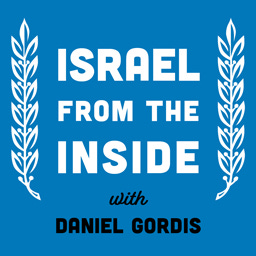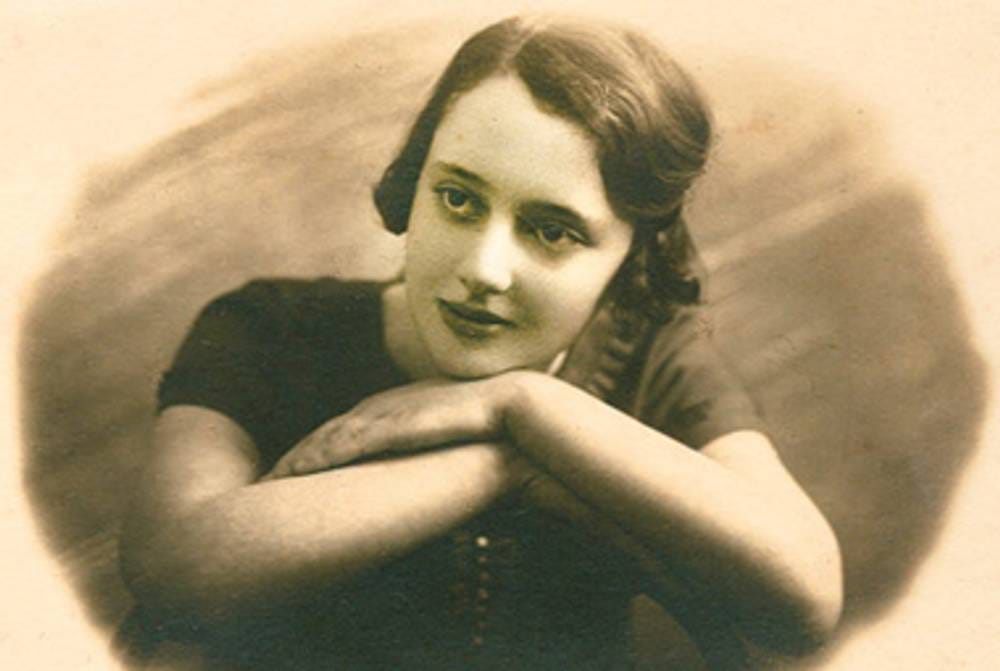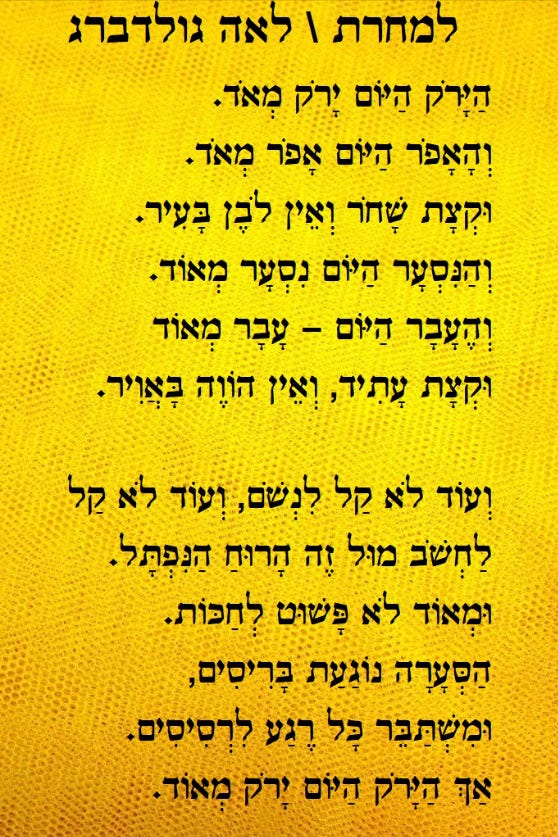"Yet the green today is very green": A nation enveloped in sad joy ....
Description
Israeli TV, especially in the morning hours yessterday, was filled with images of Israelis celebrating, dancing, popping Champagne bottles and embracing. Even the New York Times ran photos of Israelis dancing, celebrating.

It’s Sukkot, so Hallel is recited in the morning prayers, and Hallel contains the phrase, הוֹשִׁ֤יעָה אֶת־עַמֶּ֗ךָ וּבָרֵ֥ךְ אֶת־נַחֲלָתֶ֑ךָ וּֽרְעֵ֥ם וְ֝נַשְּׂאֵ֗ם עַד־הָעוֹלָֽם, “Deliver and bless Your people; tend them and sustain them forever” (Psalms 28:9). I can’t imagine that Hostage Square has ever felt this way before (my thanks to my brother for passing on the original video, and to Eve Birnbaum, who filmed it, for permission to use it).

And there is, indeed, a tremendous sense of relief here, of joy, even of celebration. But it’s not quite the celebration that the media captured in the early hours. It’s more muted, more sober, more honest.
Today, before Shabbat and before they’re home, three quick glimpses of how that sobriety is getting expressed here.
Leah (or Lea) Goldberg (1911–1970) was one of the most influential Hebrew poets of the twentieth century. Born in Königsberg (now Kaliningrad) and raised in Kovno (now Kaunas, Lithuania), she studied in Berlin and Bonn, earning a PhD in Semitic languages before immigrating to Mandate Palestine in 1935. Over her career, she produced a vast and varied body of work — poetry, prose (for adults and children), drama, essays, and literary scholarship — and was also a prolific translator of major works (including War and Peace).
Goldberg’s influence on Israeli culture and Hebrew letters has been both deep and lasting. To this day, her poetry is celebrated for its spiritual intensity, and for its sensitivity to the intersection of inner life and the external world; she is considered one of the canonical poets of 20th-century Hebrew.
Many of her poems were set to music, becoming part of Israel’s “songbook,” expanding her reach beyond literary circles. Because of those melodies, millions of Israelis know some of her poems by heart, even if they don’t always know that they’re hers.

This poem which is taken from Goldberg’s book מוקדם ומאוחר (Early and Late) was written in the early 1940’s, as the European world from which she had come was being destroyed, while her own community in Palestine was laying the foundations of its future. Perhaps because it focuses on the losses of the past and the fervent belief in a future, the poem received a great deal of attention on Israeli social media when the war first started, and now, once again, people are sending it around.
Because today, like then, “still it is not easy to breathe … yet the green today is very green.”








